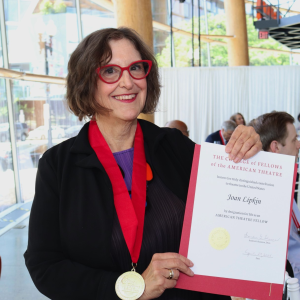Queen Esther used beauty, brains to save Jews
Published February 27, 2007
Sounds like a shady personal ad to me. Actually, this silly rhyme is a favorite Purim song among preschoolers, who parade in their gowns, crowns, and swords every year on the 14th day of Adar, and pretend to be powerful King Ahasuerus, villainous Haman, blessed Mordechai, and his younger cousin, the beautiful Queen Esther.
On this mysterious and mischievous holiday of Purim, children aren’t the only ones who shake their groggers and have a great time. Jews of all ages are invited to act out the characters in the Book of Esther, which is read from a handwritten scroll called the Megillah. To celebrate the deliverance of the Jews of Persia with “days of feasting and gladness,” grownups are encouraged to dress in masks and crazy costumes and drink plenty of spirits to the point where they can’t tell the difference between good (Mordecai) and evil (Haman). Now that’s what I call the whole megillah!
The name Purim, which has come to mean “Feast of Lots,” derives from the Persian word pur, for “lot,” the game of chance that Haman uses to decide on which day to kill the Jews. So the name itself implies that the history of Purim is filled with adult games, in which roles are reversed and lines between God and people are indistinguishable. In the “Megillat Esther,” which actually means “revealing the hidden,” even God plays the game and hides behind a mask. In fact, the name of God is never explicitly mentioned in this inspirational and well-known Bible story.
Instead, the Book of Esther suggests that God works in mysterious ways. For example, God works behind the scenes when the fair young maiden Esther is chosen among all the others in the kingdom to become queen. Perhaps it’s God’s will that Esther is put in her royal position to save her people from unforeseen destruction, and she eventually leads the Jews to triumph over their evil enemy. Again, perhaps it’s the hidden hand of God that disrupts the sleep of King Ahasuerus in his bedchambers one night and leads him to read the Book of Chronicles to pass the time. Furthermore, perhaps it’s fate when the royal highness discovers in the records how Mordechai — a Jew of all people — saves his life. Finally, perhaps it’s part of God’s plan that Haman builds the very gallows that are meant to hang Mordechai, but ironically led to his own demise instead.
Since so much of Jewish thought is based on personal interpretations, it’s possible that God created Queen Esther to inspire women and mothers in the future. Like Esther, a woman must hold her head high and not be afraid to use her beauty, strength, intelligence, and charm to make a difference in the world. Like Esther, who faces her fears and makes sacrifices for the sake of the Persian Jewry, a mother always puts her family first and does whatever it takes to protect her children from harm.
Like Esther, whose natural beauty wins over the heart of the king, a wise woman learns to accept her own inner and outer qualities. Like Esther, a confident woman realizes that what you see is what you get. Even though Esther hid her true identity as a Jew at first, her deception had a purpose: the survival of her people.
Like Esther, who risks her life as she bravely approaches the king without being summoned, a woman must risk failure to achieve success, and she must always seek the truth. In addition, Esther uses her gentle nature to persuade the King to grant her anything she wants, including another decree for the Jews to protect themselves if they’re attacked. Likewise, a woman realizes the power of kindness when it comes to earning love, respect, and trust of others.
Like Esther, who prays and fasts for three days before she squeezes into her royal robes and hosts a special feast to expose Haman’s cruel plans, a typical woman usually diets before any big event. Some things, I guess, never change.
“The Mishegas of Motherhood” is the creation of Ellie S. Grossman, a St. Louis freelance writer and stay-at-home-mom who never stays home. Her stories are inspired by the real life of her family, including her two children, toy poodle named Luci, and her husband, but not necessarily in that order. Feel free to send any comments, prayers or recipes to her new e-mail: [email protected].















